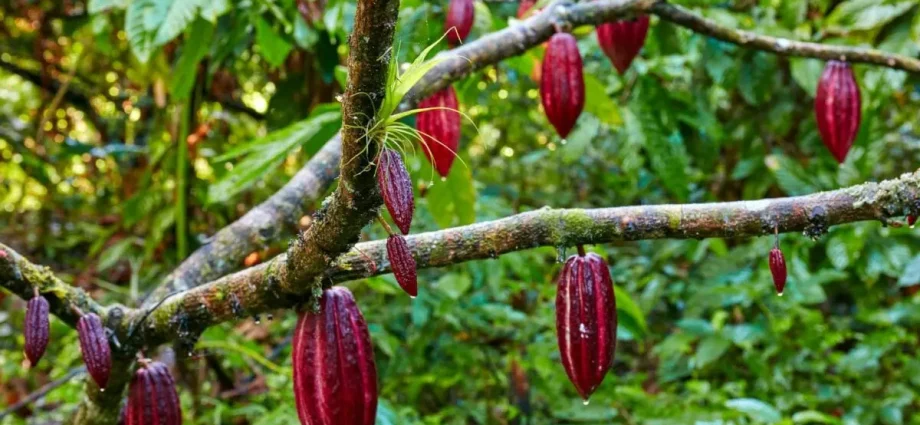Cocoa Is really a fruit. In Mexico, in the state of Tabasco, plantations of cocoa trees () – the same part of the everyday landscape, like the rows of vines in their homeland and.
Large oblong fruits literally stick out from tree trunks. Carefully so as not to damage the bark, plantation workers cut the cocoa fruit. To do this, they use special machete knives, and for those fruits that hang high, the knives are attached to long sticks. It doesn’t smell like chocolate yet (), but the first step towards its birth has already been taken.
Fetus cocoa-the tree is large (), a bit like a lemon or an elongated melon in shape, but with longitudinal ridges and grooves – like some pumpkin varieties. The color of a fully ripe cocoa fruit can be different – yellow, purple, red, orange. However, the best chocolate is obtained from slightly unripe green fruits.
The thick rind of the cocoa fruit is not very strong: it can be broken by knocking the fruit on a stone. Inside we will see a kind of corn, something like a cob () – and 30-50 pale lilac grains on it. These are the cocoa beans. “” With cocoa beans is covered with white viscous pulp that looks like yogurt. This liquid is quite pleasant to the taste – sweet, slightly sour, quite edible (). They say that the Indians in the old days made some kind of alcoholic drink out of it.
Now a little math. To cook a kilo chocolate, you need about five hundred beans. No more than 50 fruits are harvested from each tree per year, in each – 30-50 beans. Therefore, one tree can produce at best 4-5 kilos of chocolate per year. Considering that the collection and processing of fruits is done by hand in most cases, it is only surprising that chocolate is so cheap.
So, the fruits are gathered. Then they are cut with knives – each into several parts, peel off and spread the pulp with beans on banana leaves. Or, as an option, they are placed in barrels. Over the course of ten days, the white pulp is gradually fermented under the sun, and the sugar it contains is converted into alcohol. On the one hand, in this way the seeds are deprived of the opportunity to germinate. On the other hand, beans during fermentation lose some of their bitterness and change their pale lilac color to brown.
The beans are then dried. Traditionally – under the rays of the sun. In modern conditions, drying ovens are more often used. After drying, the beans lose about half of their original size.
Then they are packed and sent for processing – mostly overseas. And already there, in some civilized European chocolate factory, the beans are peeled, fried () and crushed.
When heated, it is released cocoa– oil, and as a result of crushing – the so-called. “Grated cocoa” (as for “cocoa powder” – it is a cake left after pressing the cocoa butter). The main and most delicious thing here is precisely cocoa butter: it is no coincidence that white chocolate, in which grated cocoa or cocoa powder is not put at all, remains quite a chocolate. But replacing cocoa butter with some of its vegetable analogue () means simply killing the chocolate as such. And they kill, they kill regularly!
The classic dark chocolate we know is a mixture of cocoa butter and cocoa liquor (in the worst case cocoa powder), to which the obligatory vanilla () and some sugar are added.
In the absence of the last two ingredients, you get 100% chocolate (). The phrase “100% chocolate” sounds beautiful, perhaps. Let us take into account, however, the fact that it is only suitable for culinary use.










